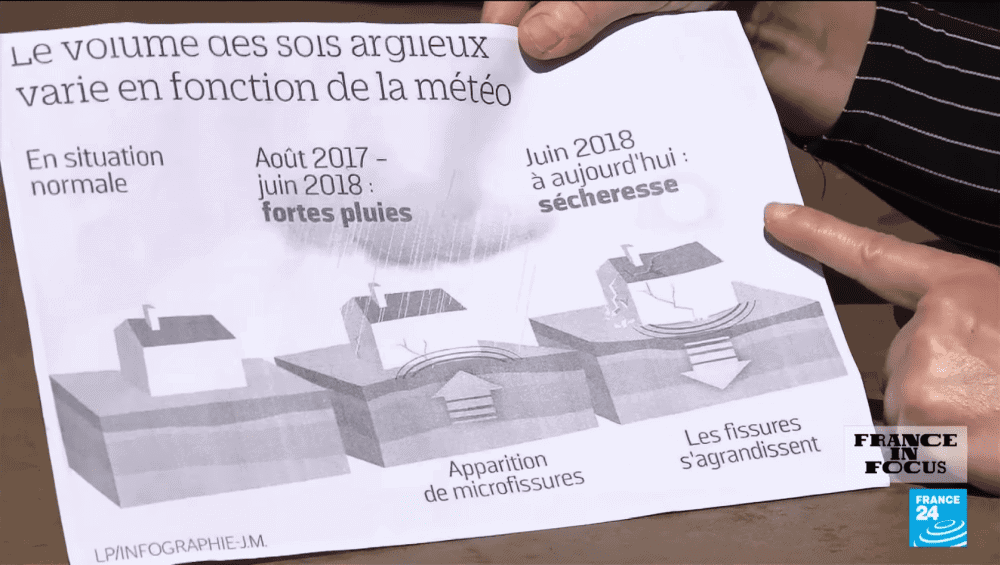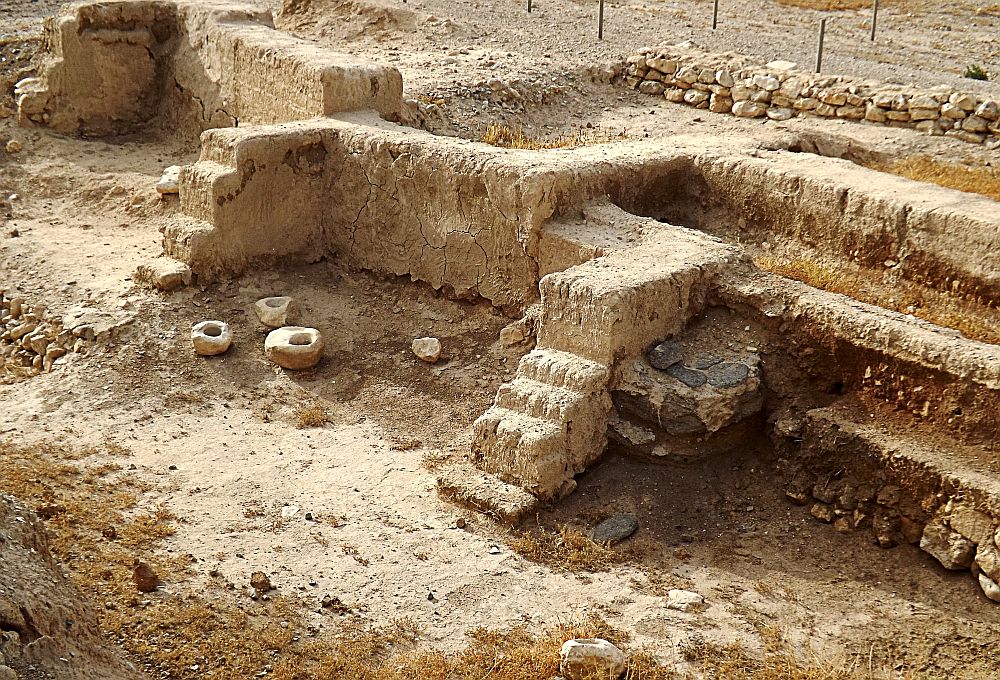
[Image above] A recent segment on French news network France 24 explains how heat waves and drought cause clay soil to contract, leading cracks to form and grow in a house’s foundation and walls. Credit: France 24 English, YouTube
From root beer to garbage disposals to flag-patterned swimwear, there are numerous products in the United States that residents take for granted but are rare or impossible to find in other countries.
Air conditioning is becoming an increasingly recognized example as Europe continues to weather record-setting heat waves and drought. While nearly 90% of U.S. households used some sort of air conditioning in 2020, less than 10% of households in Europe have an air conditioning unit.
There are both environmental and societal reasons for the lack of air conditioning in Europe. Historically, summer in European countries rarely reached the sort of persistently high temperatures seen in the southern United States, so air conditioning was largely unnecessary. In addition, air conditioning is a major source of greenhouse gases, and many Europeans believe it is better to sweat for a few days than rely on an energy-intensive and environmentally destructive technology.
But with Europe experiencing an increasing number of heat waves over the past two decades—including one in 2003 that resulted in at least 30,000 deaths—more Europeans now view air conditioning as a necessity rather than luxury. A 2018 International Energy Agency report found that air conditioning ownership in Italy, Spain, Greece, and southern France rose rapidly over the past decade.
But even as more Europeans install air conditioning in their homes, it does not solve the issue of heat’s effect on the house itself.
During summer, heat will dry out the soil around a house, making it contract and pull away from the foundation. This shrinkage can cause the house to shift, leading to cracks in its foundation and walls.
Houses built on clay soil are even more prone to foundation cracks due to clay’s tendency to swell when wet and then contract when drying.
In France, ground movement due to expansion and contraction of clay is a major problem for property owners. Each year, the government and insurers pay out millions to homeowners who suffered major cracks and subsidence to their property, mainly older houses standing on shallow foundations.
To reduce the incidence of such claims, since January 2020, the French government now requires a soil study be carried out before the sale of building land or new house construction. However, this requirement does not help homeowners who live in existing older buildings.
After this summer’s heat waves, thousands more houses in France are expected to be left with sizeable structural cracks. For homeowners to claim damage, however, the area must be declared a catastrophe naturelle (natural disaster) zone by the state. Yet the damage often does not appear until months—or even years—later, and homeowners must file an insurance claim within two weeks of the catastrophe naturelle declaration being published.
(An article on The Connexion provides French homeowners a guide to navigating the catastrophe naturelle insurance claim process.)
Insurers and the French government have been in talks over how to better handle such subsidence-related damage claims. While these talks were interrupted by recent elections and are likely to resume in the autumn, an article on The Connexion explains that the biggest disagreement currently is insurance firms refusing to pay for durable, structural repairs over short-term fixes.
However, insurers are giving their full backing to an experimental technique called Maison Confortée par Humidification (MACH), which could be approved in the next year or two.
Developed by government research body Cerema, the MACH system aims to maintain a balanced water state in the soil around a house’s foundation. It works by collecting rainwater in tanks and then releasing it through pipes near the foundation when sensors in the soil show the clay is drying out.
The system was tested between 2016 and 2020 on a house with cracks. During that time, existing cracks did not get any bigger and no new ones developed.
Learn more about MACH in the video below. (Video is in French; auto-translated subtitles are available.) Cerema says installing a MACH system will cost about €15,000, compared to €16,300 for the average cost of traditional repair systems.

Credit: France Assureurs, YouTube
Author
Lisa McDonald
CTT Categories
- Construction
Related Posts
The urban fabric of brick—Part 3: Innovations and the future of design
November 11, 2025
The urban fabric of brick—Part 2: Ancient brick history
October 28, 2025


